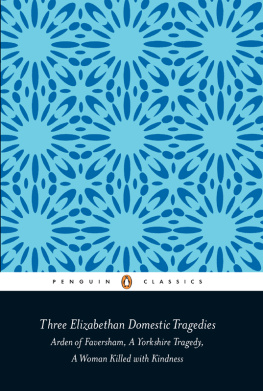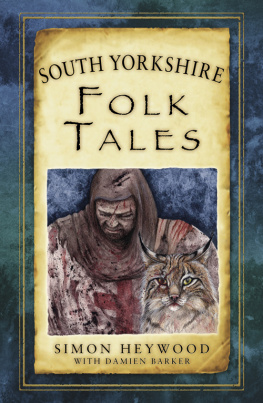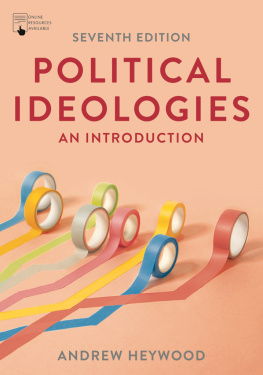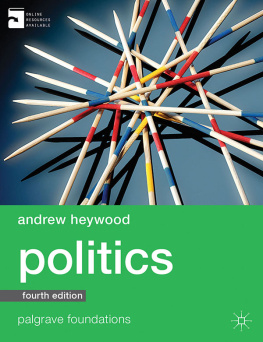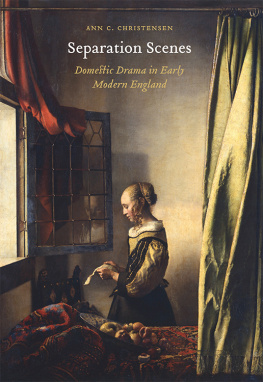Heywood Thomas - Three Elizabethan Domestic Tragedies
Here you can read online Heywood Thomas - Three Elizabethan Domestic Tragedies full text of the book (entire story) in english for free. Download pdf and epub, get meaning, cover and reviews about this ebook. City: London;New York;N.Y, year: 2012;2011, publisher: Penguin Books Ltd, genre: Detective and thriller. Description of the work, (preface) as well as reviews are available. Best literature library LitArk.com created for fans of good reading and offers a wide selection of genres:
Romance novel
Science fiction
Adventure
Detective
Science
History
Home and family
Prose
Art
Politics
Computer
Non-fiction
Religion
Business
Children
Humor
Choose a favorite category and find really read worthwhile books. Enjoy immersion in the world of imagination, feel the emotions of the characters or learn something new for yourself, make an fascinating discovery.
- Book:Three Elizabethan Domestic Tragedies
- Author:
- Publisher:Penguin Books Ltd
- Genre:
- Year:2012;2011
- City:London;New York;N.Y
- Rating:5 / 5
- Favourites:Add to favourites
- Your mark:
- 100
- 1
- 2
- 3
- 4
- 5
Three Elizabethan Domestic Tragedies: summary, description and annotation
We offer to read an annotation, description, summary or preface (depends on what the author of the book "Three Elizabethan Domestic Tragedies" wrote himself). If you haven't found the necessary information about the book — write in the comments, we will try to find it.
Three Elizabethan Domestic Tragedies — read online for free the complete book (whole text) full work
Below is the text of the book, divided by pages. System saving the place of the last page read, allows you to conveniently read the book "Three Elizabethan Domestic Tragedies" online for free, without having to search again every time where you left off. Put a bookmark, and you can go to the page where you finished reading at any time.
Font size:
Interval:
Bookmark:


Lea and Mr G. R. Proudfoot for reading and commenting on the Introduction; to Mr M. P. Jackson for allowing me to read his highly informative B.Litt. K. S.
In scepterd pall come sweeping by,
Presenting Thebes, or Pelops line,
Or the tale of Troy divine,
Or what (though rare) of later age
Ennobled hath the buskined stage.
In scepterd pall come sweeping by,
Presenting Thebes, or Pelops line,
Or the tale of Troy divine,
Or what (though rare) of later age
Ennobled hath the buskined stage.
M ILTON s diffidence about his countrys achievements in tragedy probably had more to do with style and treatment than with subject-matter. Among the Elizabethans, Tragedy had mostly continued to bear the scepterd pall, its characters were princely and its actions heroic. But a small, well-defined group of tragedies marked themselves off from the critically conventional by attempting to portray the unheroic crimes and passions of ordinary life. These were the domestic tragedies, in their purest form murder plays, of which half a dozen or so survive. In the eighteenth century they helped to inspire a new interest in bourgeois tragedy, the fashion for which was carried to France and Germany, merging with the growing realism of European narrative art. In many ways these Elizabethan experiments anticipate our twentieth-century kitchen-sink drama.
There were probably many domestic tragedies which have simply not survived. One of them, for example, was The Lamentable Tragedy of the Page of Plymouth, a collaborative work by Jonson and Dekker, payment for which is recorded in the diary of a famous man of theatre business, Philip Henslowe.the ones reprinted here together with three or four others: the anonymous A Warning for Fair Women (published 1599); Two Lamentable Tragedies (published 1601, possibly by a mysterious Yarrington who may merely have been the plays scribe); The English Traveller (published 1633, Heywoods second attempt at a domestic tragedy which is not a murder play); and perhaps Dekker, Ford and Rowleys The Witch of Edmonton (published 1658, written a generation earlier). George Wilkinss tragicomedy, The Miseries of Enforced Marriage (published 1607) is an interesting near relation of A Yorkshire Tragedy. Of these plays, only Heywoods two tragedies have fictional plots. The others are all dramatizations of actual, historical events, in each case a sensational murder; and the plays themselves are anxious to emphasize their non-fictional nature. Their title-pages speak of their truth, by which they mean not imaginative truth but literal truth truth to life, not truth to Life.
The personification of Tragedy near the end of A Warning for Fair Women claims Now of truth I sing and later refers to true and home-born tragedy. The events were real and they concerned English people. And in each case the murder stories had received characteristic, journalistic treatment outside the plays themselves. The events behind Arden of Faversham, the murder in 1551 of Thomas Arden of Faversham by his wife and her accomplices, are recounted in detailed fashion by the plays source, Holinsheds Chronicles (which gave Shakespeare the plot for a more heroic murder play, Macbeth); it is reported briefly in Stowes Chronicle; and there is extant a ballad on the same theme, The Complaint and Lamentation of Mrs Arden of Faversham of Kent, which is probably based on the play. The crime of A Warning for Fair Women, again the murder of a husband by his wife and her accomplice, is reported in a pamphlet of 1573, A Brief Discourse; in a ballad, The Woeful Lamentation of Mrs Anne Saunders; and in Antony Mundays collection called A View of Sundry Examples (1580), which recounts twenty such murders. A Yorkshire Tragedys real-life story reached a Jacobean reading and play-going public in two pamphlets, a ballad and two plays; besides being recorded in Stowes Chronicle.
Apart, then, from Heywoods two domestic tragedies, these plays are in the first instance journalistic in flavour, even if not always purveying entirely up-to-date matter. They have a sort of documentary authenticity. And in at least some cases, the plays were serving the strict journalistic purpose of conveying fresh news material. A Yorkshire Tragedy shows this particularly well. Its villain/heros murder of two of his children occurred in April 1605. In June appeared a pamphlet recounting the crime and ending with the fact of the murderers being in prison.
In August he was executed. At some stage the play was created directly out of the pamphlet and like the pamphlet it ends on a note of indecision, with justice not having been meted out to the prisoner and with the wife resolving to do all she can to save her husband from execution. It is reasonable to infer that the play was written and staged before the end of the story was known, that is, within three months of the actual murders. The play was retailing sensational news of the moment, and the performing company, the Kings Men, was cashing in on the topical interest in the crime. Nothing could be more different from the noble intentions of high tragedy or the durability of serious art. The loss of many of these plays is undoubtedly linked with their journalistic function.
However, as with the popular press of today, the writers of domestic tragedies based on real-life events saw nothing inconsistent in titillating the audience with sensational stories on one hand, and providing overt moral instruction based on those stories on the other. These plays, in fact, properly belong with the popular kind of didactic material known as warning literature. In the sixteenth century, the idea of the Tragedy of Fortune, exhibiting an arbitrary change for the worse in mans material position to demonstrate the vanity of human wishes, was being replaced by the more moral notion of the tragedy which exhibits Gods retributive justice on the vicious and unwary. The warning literature served up practical examples of just this, deriving authority from the real or assumed authenticity of its narrative material. Hence the plethora of murder pamphlets and collections of crime stories such as Mundays, with its significant title: A View of Sundry Examples. Observe and do otherwise, the writer said, at the same time as an unacknowledged voice said, observe and enjoy.
In the warning literature writers happily combined the triple intention of reporting, moralizing and titillating, and produced a wealth of sub-literature of considerable interest to the literary specialist and the social historian. The tone of the opening lines of the pamphlet on which A Yorkshire Tragedy is based exactly conveys this complex impulse: There hath happened of late within the county of York, not far from Wakefield, a murder so detestable that were it not it desires record for example sake, humanity could wish it rather utterly forgot, than any Christian heart should tremble with the remembrance of it. The writer of this might easily earn for himself a job with a popular newspaper of today. He begins by emphasizing the topicality of his story There hath happened of late; slips in a little factual detail to establish authenticity not far from Wakefield; quickly adopts the note of righteous indignation which is the excuse for the piece a murder so detestable; openly expresses the didactic function of the exercise it requires record for example sake (i.e. this is a piece of warning literature); and ends by dropping effectively emotive words to fill the reader with a glow of moral superiority humanity and any Christian heart. And all this is designed to whet the interest.
Font size:
Interval:
Bookmark:
Similar books «Three Elizabethan Domestic Tragedies»
Look at similar books to Three Elizabethan Domestic Tragedies. We have selected literature similar in name and meaning in the hope of providing readers with more options to find new, interesting, not yet read works.
Discussion, reviews of the book Three Elizabethan Domestic Tragedies and just readers' own opinions. Leave your comments, write what you think about the work, its meaning or the main characters. Specify what exactly you liked and what you didn't like, and why you think so.

